The Great Energy Rethink: Lessons from Japan and the Neighborhood
by Rob Dietz
As if we really required more prompting, the unfolding nuclear accidents in Japan are confirming what we must do. When a disaster strikes, the most urgent response is to help those who are suffering, prevent further calamities, and clean up the messes—it’s a time to get busy. But the next critical step is to figure out what we might do differently—it’s a time to take a step back and contemplate how we got where we are and where we might go from here. With each passing day, it is becoming increasingly clear that we need to rethink where and how we get our energy supplies. We can call this Phase 1 of the Great Energy Rethink (GER). But just as important, and much less considered, is the need to rethink what we do with the energy we generate. Although it probably ought to come first, let’s call this Phase 2 of the GER.
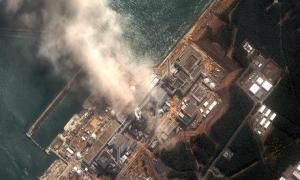
Hopefully we’ll pay attention to Fukushima’s lesson.
I find that I am profoundly shaken by what is happening in Japan. For several years, I have been on a self-prescribed media blackout. My family doesn’t have television reception, so I never watch the news. I do glance at the New York Times occasionally, but I’ve been focusing more and more of my gaze on local issues. Given the large amount of time I spend on the job considering what’s wrong with the way we manage our economic affairs, I don’t want to flood my mind with negative images of national and global dysfunction. But I have found it impossible to black out the triple disaster (earthquake, tsunami, and nuclear accidents) in Japan. The devastation and suffering are beyond description.
The earthquake and tsunami were unpreventable. After all, we live on a planet where such things occur. We’ve seen similar devastation recently in Haiti, Sichuan Province in China, Pakistan, and Indonesia and other Indian Ocean nations. But the venting of radioactive steam and the threat of nuclear meltdown were utterly preventable. A New York Times article provides an astonishing description of what happened at the Fukushima nuclear power plant where the backup generators failed to cool the overheating reactor:
The central problem arises from a series of failures that began after the tsunami. It easily overcame the sea walls surrounding the Fukushima plant. It swamped the diesel generators, which were placed in a low-lying area, apparently because of misplaced confidence that the sea walls would protect them.
The key phrase in that description is “misplaced confidence.” Misplaced confidence sums up how we got to this point in history when it comes to selecting sources of energy to power our ever-expanding economy. Regardless of what smooth-talking P.R. professionals say, a nuclear power facility has been the site of a serious accident about every 10 years: witness Three Mile Island in the U.S. in 1979, Chernobyl in Ukraine in 1986, Tokaimura in Japan in 1999, and now Fukushima in 2011. “Safe nuclear power” is an offensive oxymoron.
Misplaced confidence also describes our failure to take big strides on phasing out fossil fuels. We have misplaced confidence that we’ll find a technological solution to climate destabilization, that the market will take care of the problem, and that Mother Nature will continue to warehouse the emissions from our economy with no consequences.
If we can stop misplacing our confidence for a moment or two, we can get on with the task of selecting sane sources of energy. We can start the comprehensive conversion to renewable resources, a massive makeover that will surely include a process of powering down. This process of powering down, in turn, will require a re-prioritization of what we actually do with the energy we generate—this is the very moment to take a step back and contemplate how we got where we are and where we might go.
In my own neighborhood, folks are realizing the need to change the sources of energy. We have a decent start on Phase 1 of the GER, but we are still struggling with Phase 2. I witnessed the evidence on a recent bike ride. My friend Bruce and I were cycling on a street that is flanked by an unusual mix of farmland and industrial buildings. As we were coming up on a factory, we saw workers setting up a huge array of photovoltaic solar panels. We both wanted to stop and take a closer look for two reasons: (1) the array was by far the biggest we had seen in town, and (2) we had recently embarked on our own process of installing solar panels at our own households.
We rode up to the array where two men were setting up racks to hold the panels. One of them approached us, and we began a cheerful conversation. He was happy to answer our questions, and he was genuinely proud of his work, and rightfully so. The owners of this factory were taking an important step to switch to a safe and emissions-free power source.
I asked the worker what the factory made. He said it made advanced rubber compounds. I was thinking how great it would be to purchase locally made bike tires from this place when he went on to explain that the factory was producing sheets of rubber armor for Humvees in Iraq. That new knowledge abruptly terminated my thoughts of local sustainability. I was baffled by the oddity of:
- using solar panels to generate energy…
- to outfit military vehicles that were deployed in an effort to secure oil interests in the Middle East…
- with the ultimate goal of keeping a cheap and reliable flow of oil available to the U.S. economy.
We have misplaced confidence in our ability to make good decisions about our precious energy supply. Even if we’re successful in making the transition to a renewable energy economy (Phase 1 of the GER), we have to come to grips with Phase 2. What do we really want to do with our energy supplies? We’ll regret it if we waste them on a doomed effort to keep the economy growing.
The tragedy in Japan will require action on the ground for some time to come. For those of us who are not there on the ground, we can do our part to help by getting on with the Great Energy Rethink.
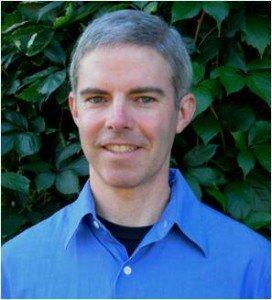 Rob Dietz brings a fresh perspective to the discussion of economics and environmental sustainability. His diverse background in economics, environmental science and engineering, and conservation biology (plus his work in the public, private, and nonprofit sectors) has given him an unusual ability to connect the dots when it comes to the topic of sustainability. Rob is the author, with Dan O’Neill, of Enough Is Enough: Building a Sustainable Economy in a World of Finite Resources.
Rob Dietz brings a fresh perspective to the discussion of economics and environmental sustainability. His diverse background in economics, environmental science and engineering, and conservation biology (plus his work in the public, private, and nonprofit sectors) has given him an unusual ability to connect the dots when it comes to the topic of sustainability. Rob is the author, with Dan O’Neill, of Enough Is Enough: Building a Sustainable Economy in a World of Finite Resources.
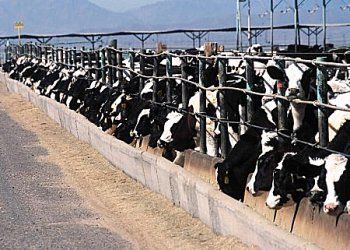
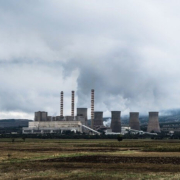
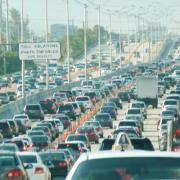
A comment from another ‘no-television’ zone : the internet images from Japan show how vulnerable even the most affluent and orderly societies are in terms of natural disasters.
Unrest in the middle east combined with an exposure of just how risky reliance on nuclear power is, will surely drive up the cost of fuel in the months to come.
This should give governments a wake-up call ;economic growth based on cheap fuel is no longer an option and the demands of an ever-growing world population will have to be reassessed.
Please disabuse yourself of the idea of “climate destabilization.” This is a misperception about climate variability, as it implies that the world’s climates were once “stable,” and that humans can do something to “stabilize” current climate variability.
Nothing could be further from the truth. Climates have always been variable and will always be so. Humans can do nothing about this, except to learn from naturally occurring “disasters” (to humans) and stop this incredibly egotistical presumption that we can control natural systems.
The future is accommodation, or humans will not be part of it.
Renewables just won’t cut it as far as supplying base load power as they depend on a rather fickle power source – sun or wind.
As we must get rid of coal fired electricity generation as soon as possible nuclear is the only proven,clean and safe mode of generation other than hydro which has a very limited resource.Nuclear plugs into the existing electricity grid so it doesn’t require new and expensive HVAC or HVDC lines. Nor does it require complex and potentially unreliable grid control systems.
You probably jib at the word safe in relation to nuclear if you are like most people at the moment who are in a hysterical state over the Japanese earthquake and tsunami.This is not surprising given the nonsense being spread by the media and the shameless attempts by the anti nuclear groups to cash in on this disaster.
While reliable information is hard to come by at the moment it appears that in excess of 13,000 people have died as a result of the tsunami while precisely zero have died as a result of radiation.I would not expect the latter figure to change very much,if at all.
The reactors in question coped very well with the seismic shock of the earthquake as they were designed to do.The reactors shut down automatically when an earth quake is detected.The resulting tsunami wiped out the diesel powered backup generators to drive the cooling pumps.This,and the related damage to surrounding infrastructure,is what has caused the crisis in the plants.The Japanese have the knowledge and the resources to cope with this situation.
I am sure that once the situation has stabilized there will be many questions asked about what went wrong and rightly so.There is much to be learned from this and those lessons will be applied to existing and future nuclear generators.To come out and say that nuclear is not safe because of this incident or because of Three Mile Island and Chernobyl is simply to parrot the propaganda of the people I call MoMs – Morons on a Mission.
There are many hundreds of nuclear reactors in the world operating quite safely and have been doing so for years.There are many more reactors on the drawing board,all of them much more advanced in design than the 40 year old reactors damaged in the tsunami.There is one very simple reason for this build out of reactors – there is no viable alternative for most of the nations of the world.
If you are reading this then you almost certainly have mains power.Ask yourself where that power comes from.There is a high probability that it comes from a coal fired generator.Now ask yourself how many people have died as a result of mining and burning coal.It will run into the many hundreds of thousands.And this does not factor in the environmental damage,existing and potential,caused by mining and burning coal.
I suggest that if you think that nuclear is intrinsically unsafe then get up to speed on the subject and above all, GET REAL.
My main point was that we need to think very carefully about what we do with the energy we generate. We take a lot of risks in the processes we use to provide electricity, whether we’re talking about coal, hydro, or nuclear. There are serious drawbacks to all of them. At no point did I claim that coal is preferable to nuclear. But still I ask: why must we keep growing the supply of electricity and increasing the scale of the economy? When I try to answer that question, I arrive at the conclusion that we’d better get on with the task of rethinking our energy usage.
Rob Dietz,if we don’t get the exponential growth of population under control then we will need to have growth in many areas not just energy.This is the fundamental problem and it is probably the most intractable given that it is on the blind side of most people and effective measures to restrict breeding are politically and morally unpalatable.
Just what sort of depths of degradation we must sink to before the message on population gets through I don’t know.
What I think you are referring to is the Growth At Any Cost mindset which Herman Daly and others on this site address so well.This mindset is an ideology but it is also a treadmill which is difficult to get off.While I advocate nuclear power I certainly do not advocate overall growth in any form let alone in electricity generation.
However,if we are to have any hope of a manageable power down in our economic systeml then we must have a reliable and practical mode of generating base load electricity.That is fundamental to any sort of civil society.
I have my own solar PV system (currently connected to the grid) which is capable of stand alone operation.I didn’t go to the considerable expense of installing this system because I have some silly notions about being “green”.I spent the money because I am realistic enough to have little confidence in our current leadership (in Australia) to make rational and effective decisions in relation to electricity supply as well as many other important matters. BTW,I am not a survivalist.They are generally people who suffer equally under delusions as the Growthers,just in a less harmful way.
But it is not realistic to expect many people to go down my path,not only on the grounds of expense.And domestic installations are just that.They do not have a signifcant bearing on the amount of electricity demanded by the essential functions of our society.
Take away those essential functions then you will not have a society in very short order.